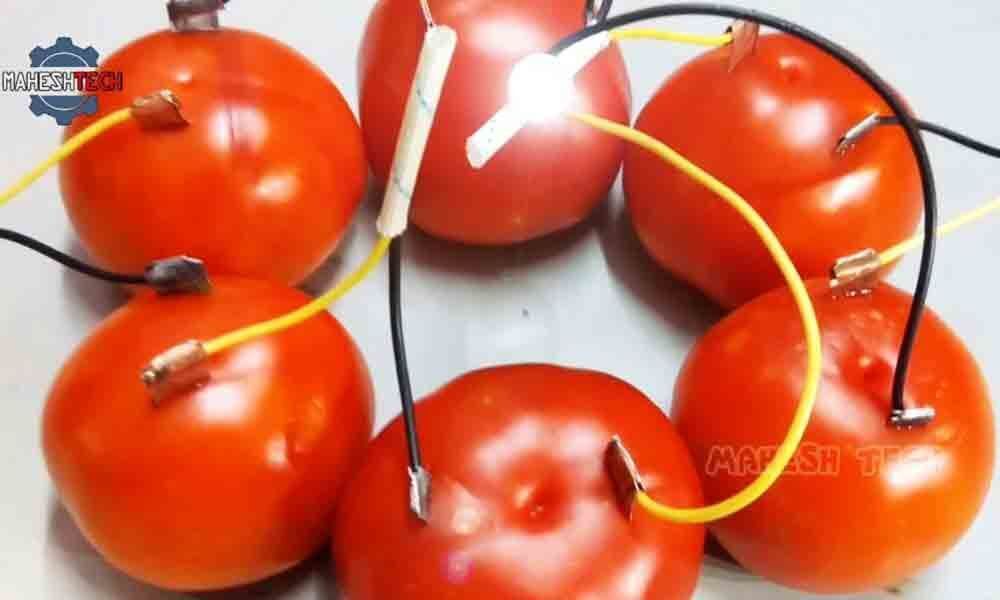About tomato battery

Electricity probably plays a major role in your life—powering everything from your laptop to your refrigerator, to the light and heat in your house.
Electricity probably plays a major role in your life—powering everything from your laptop to your refrigerator, to the light and heat in your house. Electricity is usually produced in a power plant, but you can create your own electricity-producing chemical reaction using a tomato! Once the electricity is produced it has to flow through a complete circuit to be used—the two projects below will let you experiment both with homemade batteries and electrical circuits.
You can produce electricity with two metal strips and a tomato! Hear the electricity crackle using a pair of headphones. We used a ripe red tomato from a grocery store, although green tomatoes will work even better, as they are more acidic. This experiment is most impressive with metal electrodes, but many different kinds of metal will work. Try using a piece of copper wire (or a penny made before 1982), and a paper clip or galvanized nail. Although we suggest using alligator clip leads because they are easier to connect, any insulated copper or electrical wire will work well.
The noise you heard was caused by the flow of electricity through the wires. This electricity was created by the reaction of the tomato pulp and metal. The zinc reacts with the acid in the tomato, and tiny particles with a negative charge (electrons) are set loose into the tomato juice. These negative electrons are pulled toward the copper electrode, which has a positive charge. (In electricity, just as in magnetism, opposites attract). Every battery has a negative side and a positive side. In the tomato battery, the copper electrode is the positive terminal, and the zinc electrode is the negative terminal. The electric current runs from negative to positive, and back around again when connected in a complete circuit.
















